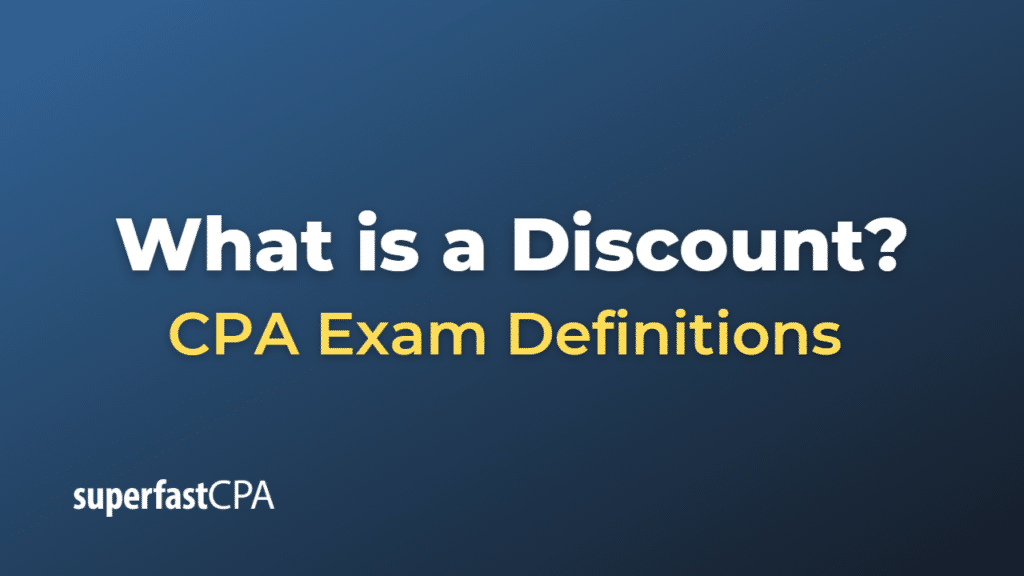Discount
In finance and commerce, the term “discount” can have several different meanings depending on the context. Here are a few examples:
- Sales and Marketing: In retail or sales, a discount refers to a reduction in the listed price of a product or service, typically used as a promotional strategy to increase sales. For instance, a store might offer a 20% discount on all clothing items during a particular sale.
- Bonds and Securities: In the financial markets, if a bond or other security is sold for less than its face value, it is said to be sold at a discount. For example, a bond with a face value of $1,000 might be sold for $950, which means it’s sold at a discount of $50.
- discount rate: In finance and economics, the discount rate is the interest rate used to determine the present value of future cash flows. In other words, it’s the rate at which future cash flows are “discounted” back to their present value. The Federal Reserve also uses the term “discount rate” to refer to the interest rate it charges commercial banks for short-term loans.
- Trade Discount: This is a reduction in the list price granted by a seller to a buyer, typically in the business-to-business (B2B) sector. This is often used when a buyer purchases goods in bulk.
- Cash Discount: This refers to a reduction in the invoice amount if the buyer pays the seller in a shorter period of time than the stipulated credit period.
The exact meaning of “discount” will depend on the context in which it’s used.
Example of a Discount
Let’s consider a few examples in different contexts:
- Sales and Marketing Discount: Imagine there’s an electronics store having a weekend sale where they offer a 20% discount on all laptops. If a laptop’s original price is $1000, the discount amount would be $200 ($1000 * 20%). So, the laptop could be purchased during the sale for $800 ($1000 – $200).
- Bonds and Securities Discount: Suppose a corporation issues a bond with a face value of $10,000, but due to market conditions, it sells for $9,500. This bond is said to have been issued at a discount of $500.
- Discount Rate: Consider a business that is expecting to receive ,000 one year from now from an investment. If they use a discount rate of 5%, the present value of that future cash flow would be approximately $9,523.81. This means they’d be indifferent between having $9,523.81 now and $10,000 one year from now.
- Trade Discount: Suppose a publisher offers a 15% trade discount to a retailer on a bulk order of books. If the books’ list price totals to $20,000, the discount would be $3,000 ($20,000 * 15%). Hence, the retailer would pay $17,000 ($20,000 – $3,000) for the order.
- Cash Discount: If a wholesaler offers a 2% cash discount on an invoice of $2000 if paid within 10 days, the buyer can save $40 ($2000 * 2%) by paying early. The buyer would then only need to pay $1960 ($2000 – $40) if they pay within the 10-day period.
In each of these examples, the discount serves as an incentive—whether it’s to drive customer purchases, to make a bond more attractive to investors, to account for the time value of money, to encourage bulk orders, or to receive payment more quickly.













